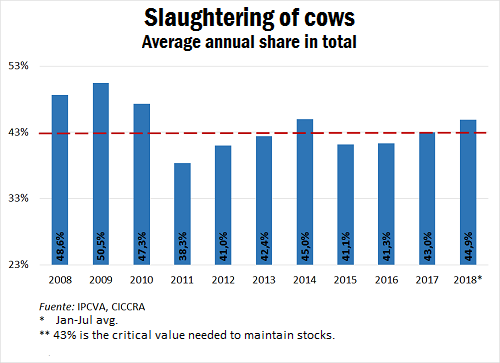We need to introduce active policies for production -bearing in mind livestock's production cycles- so that these objectives are not contradictory. Livestock is the only market in Argentina that runs under perfect competition, with tens of thousands of producers offering their cattle and tens of thousands of buyers in almost all stages. Argentine livestock sector has suffered numerous harmful public interventions along the years. There were periods in which consumption was prohibited and slaughter was banned during certain days. These measures sought to lower cattle price, and they were implemented along export closure or cancelation in order to allocate more meat to the domestic market. These interventions fixed unreal prices that always ended in a stock liquidation. We are currently entering a slow process of livestock liquidation. High interest rates will possibly be the trigger of a bulky sale process, of not only fat animals but also cows, many of which are pregnant. The Chinese demand, highly focused on cow meat, helps increasing cow slaughter to its limit.
A few years ago, Uruguay started to export whole steers to different countries – mainly Turkey- that strengthens domestic prices. This is an example of a public policy that allow producers to obtain a profitability floor but do not disregard local industry's installed capacity. Furthermore, the commercial instruments involving futures marketing also make a huge positive contribution to the sector. The forward and the Livestock Future allow granting predictability in the market. Livestock sector requires active policies framed in a growth program. We must clearly define which the sector's bottlenecks are in order to know its weaknesses and then apply the necessary corrective measures. Although we could list many production bottlenecks, it is better to focus on the most problematic ones to unleash our full potential: • National birth and weaning rate. • Sanitary diseases of rodeos. • Limits on implanted pastures. • Milk sector crisis. • Expansion and adaptation of the refrigeration industry. • Financing programs The market as the correct allocator of prices and resources sometimes needs punctual, temporary and minimum-sized active policies, which do not become explicit subsidies that create permanent distortions.
